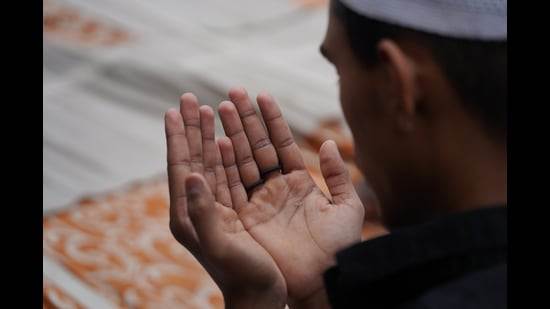Search here

27-Apr-2022 , Updated on 4/28/2022 11:58:14 PM
Which is the fastest growing religion in India?
By the year 2050, India will become the country with the largest Muslim population in the world, and in this case, it will overtake Indonesia with the largest Muslim population, while by that time the world's third-largest population will be Hindus.
According to research, the population of Muslims is estimated to grow faster than the total population of the world, and Hindu and Christian populations will be in line with the pace of worldwide population growth.
While the world’s population is projected to grow 32% in the coming decades, the number of Muslims is expected to increase by 70% – from 1.8 billion in 2015 to nearly 3 billion in 2060. In 2015, Muslims made up 24.1% of the global population. Forty-five years later, they are expected to make up more than three in ten of the world’s people (31.1%).
It said, 'India will continue to be a Hindu majority country, but it will also overtake Indonesia to become the country with the largest Muslim population in the world. 20. There is a 5 crores Muslim population. According to it, 'Christians will remain the largest religious group in the next four decades but Islam will grow at a faster rate than any other major religion'
According to the report, the population of Hindus is estimated to increase by 34 percent worldwide, which will increase from a little over a billion to about 1.4 billion by 2050. It said that by the year 2050, the population of Hindus will be in third place in the total population of the world. They will be 14.9 percent of the total population of the world. After this, there will be people who do not believe in any religion. The number of these people will be 13.2 percent. At present, people who do not believe in any religion are in third place in the total population of the world. The population of Hindus in Europe is expected to nearly double by this period. This is mainly due to immigration of about 28 lakh (0. 4 percent).
The same dynamics hold in many countries where Muslims live in large numbers alongside other religious groups. For example, India’s number of Muslims is growing at a faster rate than the country’s majority Hindu population and is projected to rise from 14.9% of India’s 2015 population to 19.4% (or 333 million people) in 2060. And while there were similar numbers of Muslims and Christians in Nigeria as of 2015, Muslims have higher fertility there and are expected to grow to a solid majority of Nigeria’s population (60.5%) in 2060.
Meanwhile, religious switching – which is expected to hinder the growth of Christians by an estimated 72 million between 2015 and 2060 – is not expected to have a negative net impact on Muslim population growth.
If we talk about history, at the beginning of the 20th century, Christianity had the largest number of followers numbering nearly 560 million while there were 200 million Muslims at the time. In 1900, Christians represented 34 percent of the global population while Muslims constituted 12 percent of all faiths across the globe.
But that margin between Christian and Muslim populations dramatically changed throughout the 20th century in favor of Islam as it became the fastest-growing religion across the world. That trend has continued into the 21st century, according to the Pew Research Center.
By 2050, “the number of Muslims will nearly equal the number of Christians around the world,” if current population growth trends continue, Pew, found in 2015. If it happens, for the first time in history, both faiths will have equal standing.
“Indeed, Muslims will grow more than twice as fast as the overall world population between 2015 and 2060 and, in the second half of this century, will likely surpass Christians as the world’s largest religious group,” said another study in 2017.
While Muslim populations have continued to increase across the world in the modern age, interestingly, the political power of Islamic-dominated states from the Mughals to the Ottomans, which had ruled vast swathes of subcontinental Asia, the Middle East, North Africa, and Eastern Europe gradually weakened in the 19th century.
Mughal power in the Subcontinent collapsed in the mid-19th century while the end of the Ottomans came after World War I in the early 20th century.

Student
Hey! This is Shreya Pandey from lucknow. I'm persuing graduation in journalism and mass communication. I'm a content writer and anchor by profession. Here I'll be posting blogs and articles
Join Our Newsletter
Subscribe to our newsletter to receive emails about new views posts, releases and updates.
Copyright 2010 - 2025 MindStick Software Pvt. Ltd. All Rights Reserved Privacy Policy | Terms & Conditions | Cookie Policy